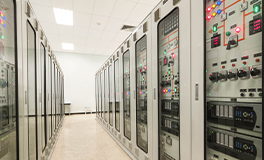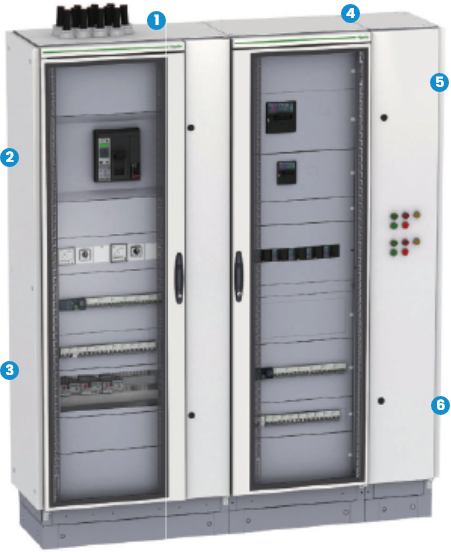
Main 10 functions
-
Voltage stresses withstand capability
- To withstand long term voltages, and transient and temporary overvoltages according to the insulation coordination principles and requirements.
-
Current-carrying capability
To protect against burns and to withstand temperature rise:
- When any circuit is continuously loaded, alone, to the specified current
-
Short-circuit withstand capability
- To withstand the stresses resulting from the prospective short-circuit current and from the associated data (High forces between conductors, temp. rise in a very short time, air ionization, overpressure).
-
Protection against electric shock
- Hazardous-live-parts not to be accessible (basic protection)
- Accessible conductive parts not to become hazardous-live (fault protection).
-
Protection against risk of fire or explosion
- Resistance to internal glowing elements
- Note: Protection of persons, and optional protection of the assembly, against arcing due to internal fault can be specified through a ‘‘special test’’ according to IEC 61641.
-
Maintenance and modification capability
Capability to preserve continuity of supply without impairing safety during assembly maintenance or modification
- Electrical condition of the assembly or various circuits
- Speed of exchange of the functional units
- Test facilities…
-
Electro-Magnetic compatibility
To properly function (immunity) and not to generate EM disturbances (emission) in specified environmental conditions:
- Industrial networks or locations (Environment A)
- Domestic, commercial, and light industrial locations (Environment B).
-
Capability to operate the electrical installation
To properly function, according to:
- The electrical diagram of the overall system and related information (voltages, coordination…)
- The specified operating facilities (e.g. free or restricted access to Man Machine Interfaces, isolation of the outgoing circuits,…).
-
Capability to be installed on site
- To with stand handling,transport,storage…andinstallationconstraints
- Capability to be erected and connected (type of enclosure, type, material and cross sectional areas of external conductors).
-
Protection of the assembly against mechanical and atmospheric environmental conditions
- Presence of water or solid foreign bodies (IP according to IEC 60529)
- External mechanical impacts (optional IK according to IEC 62262)
- Indoororoutdoorinstallation(humidity,UV).
















